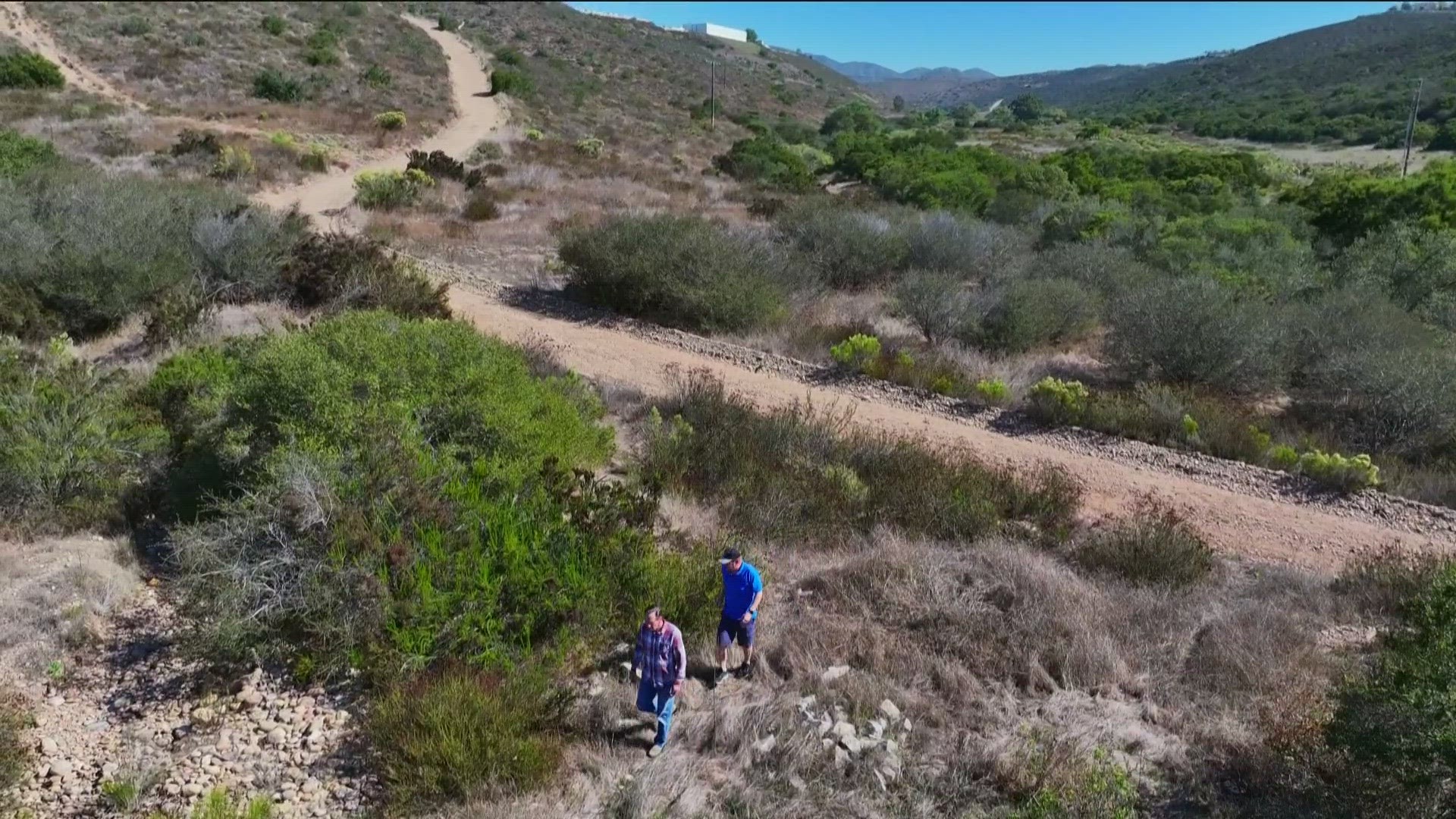SAN DIEGO — Twenty years ago, the Cedar Fire started in the Cleveland National Forest, when a lost hiker started a fire to signal help. Right from the start, fire crews had several things working against them, including the flames burning in an area with no easy access for vehicles and it was too late in the day for helicopters to make water drops.
The flames moved through Beeler Canyon into the eastern end of Scripps Ranch. The Cedar Fire was first reported in the evening on October 25 2003 and by the next day, the wildfire exploded driven by Santa Ana winds. Steve Hargin first saw smoke.
"The next thing you could see was the flames, the cops were telling us to evacuate."
Those winds would steer the flames into Scripps Ranch.
"The wind shifted and shifted the fire and got it down to Scripps Ranch and burned out all those homes," said Hargin.
And while the homes could be rebuilt, it would be a different story for the chaparral.
But what may look burned out is also a natural cycle for native plants. Calfire Division Chief Eric Just says Mother Nature can be amazingly resilient.
"We'll have an area that has burned, and you could see shrubs resprouting within months after a fire. It's surprising how fast these natural species recover from fire," explained Chief Just.
And in most cases, it doesn't take long for the native plants to return.
"To the casual observer, within four or five years it may not even be recognizable that there was even a fire there. [Why does this come back so plentiful?] "Because it's designed to, it's supposed to," said David Ross, a Senior Manager at Walter Anderson Nursery.
Ross showed us a plant that was burned out but survived the fire:
"So, all the old plant is dead and all the green coming from the base is where it didn't totally destroy the plant. It just killed everything that was above ground," said Ross. "For native plants to survive, the wildfire [it] needs to move through quickly. When the fire came through, it burned the top growth. Remember how fast, you know how fast the fire was going through here, I was watching you on TV."
The Santa Ana winds drove the fire through quickly instead of a slow burn
"When it's moving through fast like that, it allows things to survive. Because the fire spends less time and didn't wipe out everything and the majority has come back," Ross.
Twenty years later now that burn scar is thriving, the coyote brush is providing pollen and nectar to the bees and butterflies, the scrub oaks have returned and are as big as they ever were. The buckwheat has bloomed and produced an abundance of seeds
And the rain from a tropical storm has helped during the driest time of the year, which Chief Just says helped a lot.
"So, in some areas, the fire season is done, that's not the case everywhere, we have microclimates and all kinds of things in San Diego County. We're still not out of the woods in that regard," said Chief Just.
Because it's fire season year-round in San Diego.
Cedar Fire - October 2003 | President George W. Bush visits Harbison Canyon in San Diego (Oct 22, 2018)

